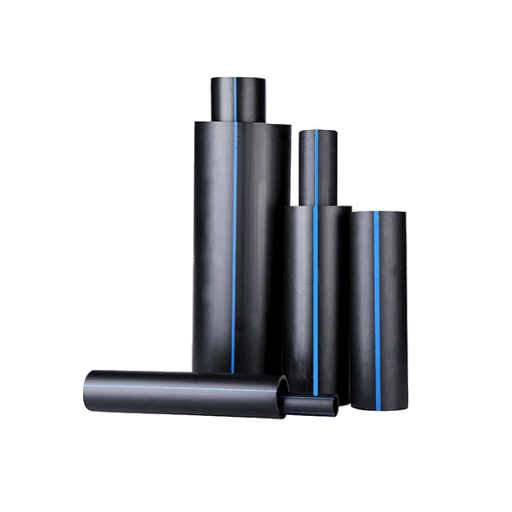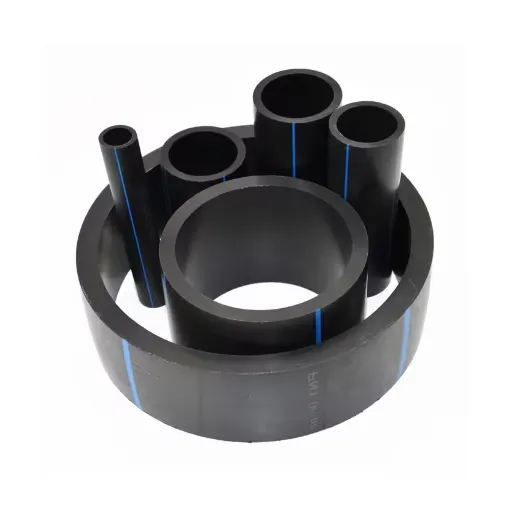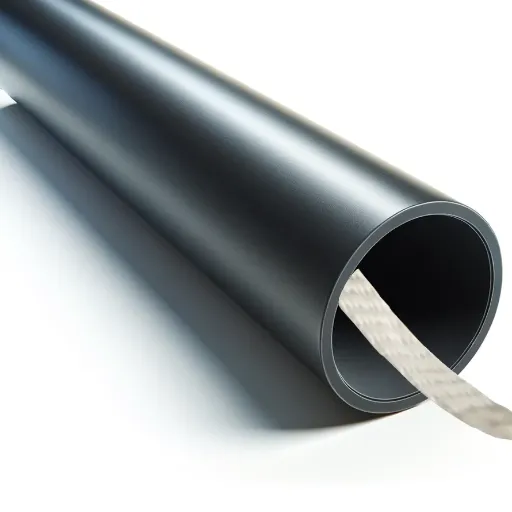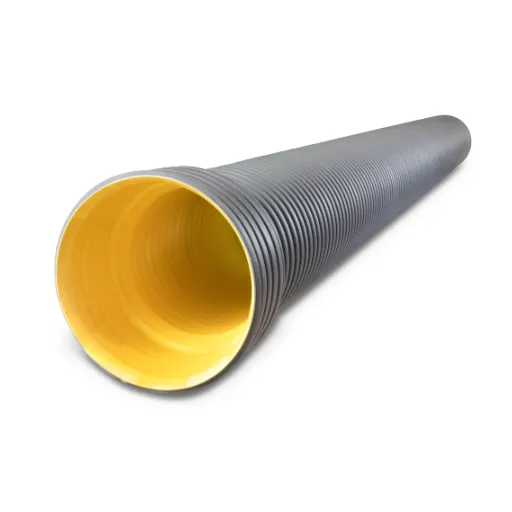High-Density Polyethylene (HDPE) pipe fusion is a critical process in modern infrastructure development, offering unparalleled durability and reliability in applications ranging from water distribution to industrial piping systems. This article is designed to serve as a comprehensive guide for engineers, contractors, and technicians seeking to master the intricacies of HDPE pipe fusion. By exploring the science behind the process, the significance of temperature control, and practical tips for implementation, we aim to equip you with the knowledge needed to ensure joint strength and prevent costly errors. Whether you’re new to HDPE pipe fusion or looking to refine your expertise, this guide will provide the strategic insights necessary to elevate your skills and project outcomes.
What is HDPE Pipe Fusion and How Does it Work?
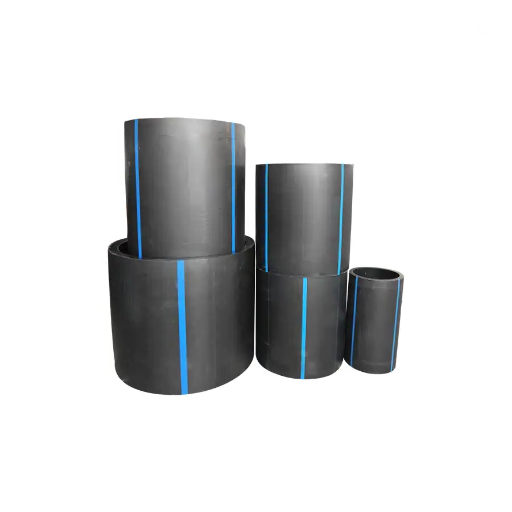
Understanding the Basics of HDPE Pipe
Like any polymeric material, High Density Polyethylene (HDPE) can also be used in piping systems demanding toughness, flexibility, and resistance to corrosion. Durability-tested piping, commonly known as HDPE piping, is fit for use in arduous circumstances such as water supply and gas transmission, for domestic as well as industrial purposes. Their lightweight makes the constructions cost-efficient, aids in ease of transportation, and saves on installation time. In addition, aggressive chemicals do not affect the pipes, making HDPE pipes a long-lasting solution in diverse and demanding conditions.
Versatility to high temperature and pressure extremes sets HDPE pipes apart from others. Each piping system comes with a rating for pressure, which is assured by the precision extrusion process of manufacturing. Unlike traditional Steel and PVC materials, the molecular structure of HDPE makes it extremely ductile, which prevents fractures under stress. This enhanced flexibility makes the HDPE piping systems ideal for use in Trenchless Technology, irrigation systems, and other deep demanding installations.
Also, HDPE piping systems have non-compounding systems of joints, especially of heat fusion, where the joint forms a monolithic, leak-free bond. This fusion increases the joint’s strength to at least the level of the pipe, if not surpassing it, meaning the chances of failure over time are minimal. Coupled with a lifespan of up to 100 years under ideal conditions, these pipes are vital to contemporary infrastructure.
The Science Behind Fusion Welding
Heat fusion, or simply fusion welding, is a technique that melts and joins together pliable plastics like HDPE. It does so by applying heat and pressure to form a strong, impermeable seal. A weld is made by infusing the interface of the joint and cooling it to form a bond. This bond is often equal to or stronger than the pipe itself.
The specific scientific base of fusion welding relies on the deep molecular physics of the welding itself. A polymer like HDPE is classified as a thermoplastic because of its ability to flow when heated. It becomes soft and pliable as it reaches the melting point, which, depending on the grade, is in the range of two hundred to 270 degrees Fahrenheit. Once it reaches the desired temperature, the rigid structure becomes soft, allowing intermolecular movement between the polymer chains of both sides to take place and move. The joint is then cooled and shape retained, at this point, the separated chains are locked into a single coherent solid structure, making it extremely durable and permanently unified.
The long-term reliability of the system is ensured by fusion welding being effective as well. Specific equipment like butt fusion or electro-fusion machines which guarantees the right alignment and heating of the joint needs to be done with proper care. This exactness, coupled with best practice compliance, makes it possible for fusion welding to be one of the most dependable methods used to install longitudinal effortless piping joints for different structural uses.
Key Components of a Pipe System
An ordinary pipe system consists of several components that interrelate and ensure appropriate and optimal transport of fluids or gases. The main elements are:
- Pipes: Pipes are the primary units which serve for the transportation of the different types of materials. They are constructed from different types of materials, like: stainless steel, PVC, polyethylene (PE), and HDPE. Their selection is based on the type of material being transported, temperature, and pressure requirements, among other aspects.
- Fittings: One of the very important tasks done by fittings is connecting pipes, changing the direction of flow, or changing the diameter of a pipe. Common fittings are elbows, tees, reducers, and couplings. They provide the connection and the flow mechanisms in the piping system without compromising the whole system.
- Valves: Valves provide the control of the flow of fluids and gases in the system. Important types of valves include gate valves and ball valves, and butterfly valves. Each type serves its operational requirements: isolation, throttling, and flow reversal.
- Supports and Anchors: In every system of pipes, putting in place supports and anchors is very important for the structure of the whole system. These Components lessen the stress caused by thermal expansion, vibration, the movement of loads, and, in general, dynamic loads. This decreases the chances of material fatigue and deformation.
- Flanges and Connectors: Specialized connectors and flanges enable piping systems and sections of piping to be joined with relative ease. These parts permit the simple joining and separation of sections, as well as the dismounting of the entire unit for maintenance, without affecting the entire network.
- Gaskets and Seals: Gaskets along with seals are necessary to block leakages from the pipe joints and intersections. Modern gaskets composed of elastomers or composite polymers are chosen because of their high resistance to chemicals and ability to withstand high pressure.
- Instrumentation and Control Systems: Today’s pipe systems incorporate control instrumentation that continuously supervises factors such as pressure, temperature, and flow rate. The efficiency of operations as well as safety is improved through the rapid detection of any deviations from safe conditions during operation.
These, together, are the components that are tailored and designed to optimized models with restrictions of fluid, mechanical, environmental dynamics, geostationary stress, and other factors.
How to Determine the Correct Welding Temperature for HDPE Pipes?
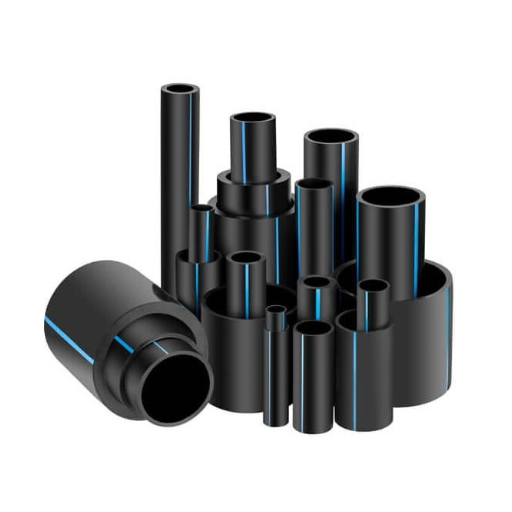
The Role of Ambient Temperature in Fusion
The surrounding temperature impacts the process of fusing high-density polyethylene (HDPE) pipes as it affects the ease and quality of the joint made. Atmospheric changes have an impact on the cooling and heating phases of the fusion process, which must be controlled within certain limits for adequate temperature bonding to take place. Normally, for HDPE pipes, fusing around 400 to 450 °F (204 to 232 °C) is ideal, but conditions like the presence of wind or outdoor heat may require some shifts to aid in heating the entire pipe evenly.
Below freezing or cold temperatures may result in longer heating times and uneven heat distribution which may weaken the bond and cause the joint to fracture. In contrast, high ambient temperatures may accelerate the heating phase and cause overheating which may result in excessive melting and deformation of the pipe edges. It is very important for devices that experience different environmental conditions to monitor temperature compensation during preheating, apply constant thermal control devices, and precisely control heat at varying conditions.
To reduce environmental effects, companies make use of insulating tents or shields to maintain fusion conditions and thermal tolerances, and equilibrium is maintained. Ambient variation also requires precise measuring instruments as well as data logging devices, which allow control over monitoring the set limits, thus ensuring that the execution of fusion is within the recommended levels for reliable and durable HDPE pipe connections.
Guidelines for Temperature Control
As with any work involving plastic pipes, maintaining optimal temperature control when fusing HDPE pipes is essential to achieve the highest level of joint integrity. To ensure proper conditions, worksite temperatures must be maintained within certain parameters on site, which requires the use of calibrated infrared thermometers or thermocouples. Changes in ambient temperature can greatly impact the behavior of the materials, especially in colder regions where the fusion zones require some preheating. On the other hand, higher temperatures may require the use of cooling measures to prevent excessive joint strength degradation.
For more steady operations, manufacturers of most types of pipes specify their requirements and guidelines about the heating of the plates set between 400°F (204°C) and 450°F (232°C). These specifics are to be scrupulously followed. Portable windbreakers or other thermal shields can be used to control the level of wind or sunlight that causes nonuniform heating. Conducting test welds in advance of full operational configuration is one of the most dependable techniques for assessing temperature verification with uncontrolled verifiable conditions.
The use of automated equipment that records heating time, temperature, and the pressure applied goes a long way in improving control with a data-driven approach. Adherence to practices supports the notion of long-lasting, high-performance connections suitable for use in a range of environments and conditions.
What are the Best Practices for HDPE Pipe Welding?
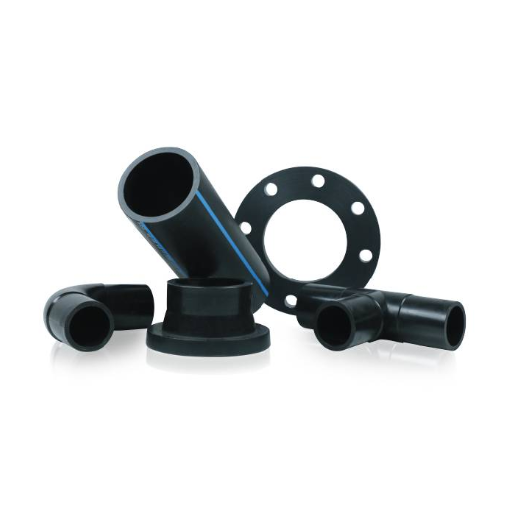
Ensuring Proper Heating and Pressure
To provide secure connections, the welding of HDPE pipes requires exact control over both heating and pressure. Suitable heating is achieved by keeping the temperature within the range required for the material, which is usually between 400°F and 450°F (204°C and 232°C), depending on the thickness of the pipe and the manufacturer’s recommendations. To eliminate the possibility of weak welds caused by overheating or underheating, uniform heating across the pipe surfaces is critical.
Applying consistent and calibrated pressure simultaneously guarantees uniform fusion throughout the entire component during the welding process. The pressure needs to be constant and within set bounds to ensure proper interfacial contact devoid of gaps or irregularities which may cause inadequate joint strength. For factory automation systems, the use of modern day sensors offers the capability to continuously monitor and capture data automatically, enabling operators to analyze data in real-time which minimizes error.
Following these guidelines allows the welded joints to comply with or surpass the welded joints requirement industry standards in terms of the pipe’s strength, durability, and performance, especially for high-stress or variable environmental conditions.
Aligning Pipe Ends for a Perfect Joint
Exact alignment of the pipe ends is essential in achieving quality welded joints. Any misalignment increases the likelihood of stress risers occurring in the joint, which weakens the component, resulting in premature failure when subjected to loads.
Traditional approaches to pipe alignment start with the basic prep work of the pipe ends which entails edge beveling and preparing for the groove type welds. This activity is done using specialized automated beveling machines that provide consistent results. A set of more advanced alignment instruments, including, but, not limited to, pipe clamps and laser and centering units are used to accurately hold the pipe ends in place. These tools are capable of making small movements to fit within tight tolerances of a fraction of 1/16 of an inch.
Alignment should be checked by operators regarding the ends of the pipes with the help of digital measuring systems or non-contact optical instruments, because the operators are provided with feedback. Non-contact optical instruments and digital measuring systems are incredibly accurate and more precise than humans. Humans are incapable of achieving such accuracy and precision as with the use of these technologies, and these humans are referred to as operators in this case. In addition, environmental factors such as fluctuations of temperature or vibrations should be monitored, as they have the capability of influencing alignment whilst welding is taking place. Using advanced tools for alignment along with monitors, advanced preparation methods, and continuous observation gives operators the ability to get a joint that is perfectly aligned and allows the joint to be safe and durable even in high-performance applications.
Preventing Leakage in Pipe Systems
Preventing leakage in pipelines requires comprehensive planning, quality materials, careful monitoring, and effective maintenance- a holistic approach. Every failure starts with a design flaw stemming from neglect around compatibility, material taxation, pressure range, thermal expansion, and compatibility. These factors need to be at the forefront of any system’s solutions and consideration policies. Protecting gaskets under changing operational conditions, shimmed with metallic seal coating, ensures a strong connection using advanced sealing technologies.
Strong step by step policies empowered by modern technology like AI can address otherwise ignoreable needs from the start through continuous maintenance monitoring. Predictive maintenance tools deepen reliability for these frameworks, adding to proactive equipment-attentive real-time monitoring systems and sensors that throughally examine pressure, flow rate and acoustics.
Despite highly variable conditions, integration of AI can enable effortless transition into other domains, making the selection of stainless steel, PVC and addionally coated pipelines extremely easy, durable, and reliable. Coupled with careful inspection and installations, these frameworks form a strong defense and combat wilful system inefficiency and potential leakage through effortless retains in any situation.
How to Choose the Right Welding Method for HDPE Pipes?
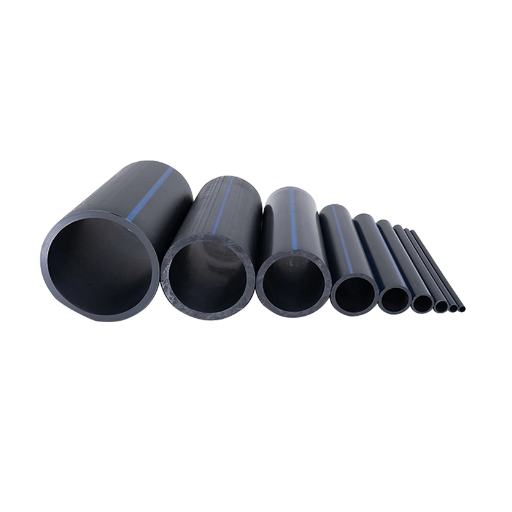
Comparing Butt Fusion and Socket Fusion
When choosing between butt fusion and socket fusion for welding HDPE (High-Density Polyethene) pipes, it is important to discuss their procedures, uses, performance characteristics, and other factors to ensure project-specific requirements are addressed.
Butt fusion is referred to as the most common method of welding HDPE pipes because it involves heating specific ends of the pipe and fusing them using a plate. Additionally, it is increasingly easier to perform on larger sizes of pipes since it guarantees a smooth, joint-free intersection of pipes. Because of these reasons, butt fusion can be highly beneficial for intense flow systems where pressure is high. The completed joint is almost always able to withstand the same or higher pressure than the pipe itself. Despite all these benefits, butt fusion requires pipe ends to be perfectly aligned and skilled operators in outdoor conditions to perform optimally.
Cone fusion utilizes heat tools that both raise the temperature of the end of the pipe and the inside of a corresponding socket fitting at the same time. After this, the pieces are fused to create a reliable and strong bond. This technique works especially well for less complex configurations – small diameter pipes and systems like indoor plumbing or irrigation networks. Socket fusion is very helpful because of its equipment adaptability; it can be used in diverse work scenarios and environments. That said, insertion depth control, heating duration, and precise time management must be maintained to prevent joint failure.
The selection between the two techniques depends on the diameter of the pipe, its required pressure tolerance, the level of experience of the operators, and the complexity of the system being dealt with. Completion of both methods, the reliability and accuracy of work done in the field is enhanced by modern welding tools with digital controls and data logging capabilities.
Advantages of Electrofusion Fittings
The use of electrofusion fittings has increasingly become popular in modern infrastructure projects owing to their ability to join polyethylene (PE) pipes due to their stringent requirements. With the integration of heating elements, they provide better control and accuracy during the installation process because the heating elements uniformly apply heat during the fusion process. This aids in reducing the failure rates of the joints, leading to better strength and durability.
Electrofusion is highly useful in remote or hard-to-reach locations due to the small size of the equipment that improves maneuverability unlike the butt fusion machinery. This also allows for the use of the fittings with pipes that have different thicknesses and diameters, which improves system design flexibility. Most importantly, the fittings do not create excessive weld beads inside the pipe, which helps in avoiding flow obstructions that improve the efficiency of the system.
Electrofusion processes use digital control units that allow operators to monitor and record fusion parameters in real time. The possibility of logging data helps to meet rigid industry requirements, assists in traceability, and improves quality assurance activities. Field studies have shown that pipelines joined through electrofusion are regarded as superior for service life and pressure resistance, making them ideal for high-demand applications such as gas, water, and industrial fluid transport systems. These advancements collectively position electrofusion fittings as a sophisticated and dependable tool in contemporary pipeline engineering.
Selecting Suitable Fusion Machines
The selection of suitable fusion machines is one of the most important aspects of ensuring a pipeline system’s integrity and operational efficiency. Their capabilities for power and technique, as well as pipe and fitting material, need to be checked and evaluated against the relevant apparatus and machines for a proper fit. Specific operating voltage, required fusion cycles, and particular pipe diameter and wall thickness must be evaluated thoroughly. Modern fusion machines come with automatic data recording, GPS, and barcode scanning, which improve dependability and traceability during installations.
For instance, heat application on large-diameter pipelines is made easier by high-capacity fusion electrofusion machines because they offer precise application of heat on large areas without altering surface pressure. On the other hand, portable fusion machines are best for small-scale work or hard-to-reach places because of their size and ease of movement. However, for industry requirements, those markings could only be achieved by using certified machines with strong assurance of quality control. Defining power needs for the machines is equally important as their durability under different weather conditions, and for remote or extreme places, failure of the machine can cause expensive holdups.
In the end, each project has different requirements, one of them is correctly choosing the fusion machine to be used along with operational conditions guidelines, specific requirements of the work to be done, and extrapolating the future operation of the entire system. A comprehensive study of the possible requirements allows for optimal equipment placement, coupled with consultation from experts in the field, ensures alignment with the intended application.
What Challenges Can Arise During HDPE Pipe Welding?
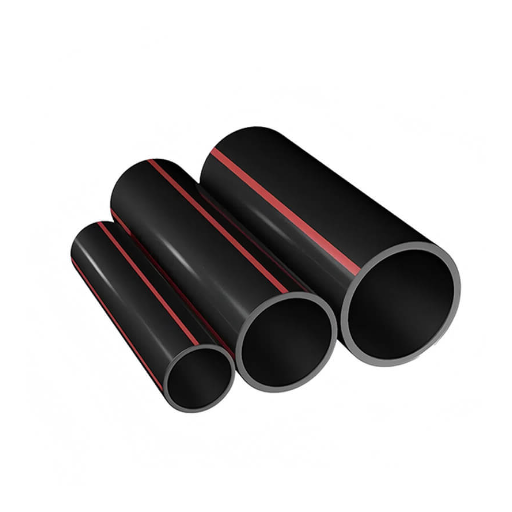
Dealing with Incorrect Temperature Ranges
The most significant problem when welding HDPE pipes is the pipe’s temperature control; it affects the pipe’s structural integrity. During the process of heating and fusion, precision in temperature ranges for HDPE, or High-Density Polyethylene, is imperative. Not enough heat will lead to insufficient material softening, resulting in poorly fused joints and mechanical stress weakness. On the other hand, too much heat will cause material damage to the softening region which resulting in uneven weld beads, which become possible fail points to the pipeline.
Advanced monitoring of the temperature is required, this includes the use of automatic fusion machines with digital controls and integrated thermometers. The welding of HDPE pipes, requires strict compliance with specific temperature ranges which usually vary from 400°F to 450°F (204°C to 232°C) depending on the pipe’s wall thickness and diameter.
Proper staff training, compliance with industry guidelines, and thorough risk assessment serve to decrease the factors of error. This pattern relies on manual welding adjustments overseen by the operator, allowing for better cones to be met with higher precision. Reliability today comes from the use of modern fusion machines with built-in automated systems that maintain temperatures for the best humanless precision, capable of making the pipes stronger with better fusing quality.
Addressing Issues with Fusion Time
Complications with fusion time are often caused by uneven heating, the ambient environment, or mistakes with the equipment’s calibration. Such problems may result in weak welds, joints that are not adequately fused, or other problems that can jeopardize the strength of a pipeline. Hence, achieving uniform molecular bonding along the surfaces of fusion is precisely controlled at the molecular level.
With each new generation of the automated fusion systems, advances are being made toward remediating such problems. Newer systems have programmable logic controllers (PLCs) integrated into them, as well as real-time monitoring sensors that constantly measure the accuracy of timing and temperature. Such systems adapt much better to things like temperature and humidity changes, which allows for steadier fusion cycles. Modern studies show that variability in the fusion time is lessened by as much as 25%, which greatly increases repeatability and reduces the rate of joint failure.
Following these steps with periodic maintenance of the equipment, proper training of the operators, and systematic control can be achieved. Moreover, the use of data analytics to implement maintenance tools can detect equipment issues before they arise and hinder smooth fusion processes, which will optimize the operational efficiency greatly.
Troubleshooting Common Welding Problems
Numerous factors can cause a problem in welding. Common issues include equipment failure, the method of operation, and even the compatibility of materials. Porosity, which accounts for some of the most serious problems in welding, is a prime example as it denotes the presence of minute voids. In welding, this defect can stem from large amounts of moisture, oil, dirt, contaminants on the surface, or even unstable shielding gas flows. The seamless cleaning of surfaces and the orderly control of gas flows significantly aid in changing the outcome of welding.
Another common problem of welding is cracking. It may form during the process or even after it has been completed. Cracks are more prevalent in components that have been cooled rapidly. Furthermore, it can stem from retention stresses or the unfinished heating of the base metal. Using correct methods of pre-heating along with appropriate filling materials helps in controlling these problems.
The challenge described above, along with undercuts, forms in the weld bead and is an issue that many people face. Its causes are mostly linked to boundless supplies of heat or incorrect angles of electrodes which hinder the structural soundness of the weld. Control over increasing temperatures and the right electrode positioning aids greatly along with the verification of accurate travel speed.
Lastly, lack of fusion refers to the important problem where a weld does not adequately join with the base material. It usually results from too little heat being applied, a wrong electrode angle, or contamination on the base metal. To avoid this issue, adequate heat should be provided, and surfaces should be adequately treated before welding.
Welds are guaranteed to maintain their integrity over time when professionals analyze all possible issues and follow strict welding guidelines, identifying and rectifying the causes through proactive measures.
References
Frequently Asked Questions (FAQ)
Q: What is HDPE pipe fusion, and why is it important in pipeline projects?
A: HDPE pipe fusion is a plastic welding technique used to join high-density polyethylene pipes. It is important in pipeline projects because it creates a secure, watertight, and long-lasting fusion joint, essential for maintaining the integrity and performance of HDPE pipelines.
Q: What are the main types of fusion methods used for joining HDPE pipes?
A: The main fusion methods for joining HDPE pipes include butt fusion, saddle fusion, and electrofusion. Each method involves different fusion techniques and is selected based on the pipe sizes and specific requirements of the pipeline project.
Q: How does the butt fusion process work in plastic welding?
A: The butt fusion process involves aligning the ends of two HDPE pipes, heating them to a certain temperature using welding machines, and then pressing them together under controlled force. This results in the molten material forming a solid joint upon cooling and solidification.
Q: What role does temperature play in the performance of HDPE pipe fusion?
A: Temperature is crucial in HDPE pipe fusion as it must be maintained at the correct level to achieve a solid joint. Heating the pipes to the right temperature ensures that the plastic becomes molten and forms a secure bond, which is essential for impact resistance and long-term durability.
Q: Can you explain the significance of using a welding temperature chart in HDPE pipe fusion?
A: A welding temperature chart provides the recommended heating parameters for various pipe sizes and thicknesses. It ensures that the correct temperature is attained for different fusion methods, which is vital for achieving a strong, reliable fusion joint.
Q: Why is controlled force necessary during the butt fusion process?
A: Controlled force is necessary to press the molten ends of the pipes together evenly, which helps in forming a uniform and solid joint. This control prevents weaknesses that could compromise the watertight seal and overall performance of the HDPE pipeline.
Q: How does the size of the pipe affect the fusion process?
A: The size of the pipe affects the fusion process because larger pipes require more heat and force to achieve a proper weld. The fusion techniques and equipment, such as welding machines, need to be adjusted accordingly to ensure a high-quality joint for different pipe sizes.
Q: What are the advantages of using HDPE pipes in pipeline projects?
A: HDPE pipes are widely used in pipeline projects due to their excellent impact resistance, flexibility, and chemical resistance. They provide a long-lasting and cost-effective solution with secure fusion joints that ensure leak-free performance.
Q: What considerations should be made when working with smaller pipes, such as small-diameter HDPE pipes?
A: When working with smaller pipes like small-diameter HDPE pipes, it is important to adjust the fusion parameters, such as temperature and force, to prevent overheating and deformation. Using the appropriate fusion techniques and equipment ensures a secure and efficient bond.



